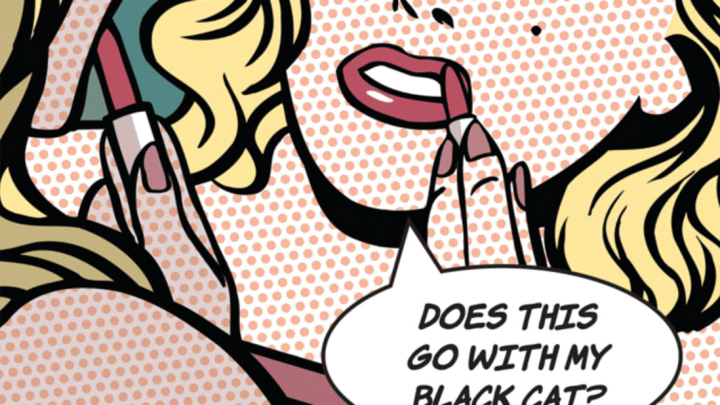DEAR A.J.,
I hate makeup, so most days I go au naturel, but my best friend says I'm lazy and should glam up every day.
— DANIELLE, NEW YORK CITY
Danielle, I think you should tell your best friend to shut her raspberry-glacé-decorated trap. Dolling up is your decision. But when you do wear makeup, be thankful that you don’t have to primp and preen the way people did in centuries past. Throughout history, beauty has been an ugly business.
Humans have smeared pretty much any animal part you can think of on their faces in the name of beauty. In ancient Rome, crocodile and swan fat were used as wrinkle removers. A type of whale feces called ambergris was found in perfumes until remarkably recently. Queen Nefertiti of Egypt allegedly used blood as fingernail polish.
Not repulsed enough?
Allow me to recommend the most popular skin cleanser of 1600s England: puppy urine. Geishas in Japan massaged their skin with a cream made of nightingale excrement. If you were a married woman, on the other hand, you generally blackened your teeth with dye made from iron filings.
Oftentimes, if your makeup wasn’t making you gag, it was slowly killing you. In 16th-century England, men couldn’t resist a deathly pallor. So women—including Queen Elizabeth I—would whiten their skin with ceruse, a mixture of vinegar and lead. Side effects included supersexy hair loss and muscle paralysis.
Spain in the 1600s was just as fun. Girls there ate clay to whiten their skin, which gave them anemia. Lip rouge in the 19th century had such delicious ingredients as arsenic and mercury. And the first waterproof mascara, in the 1930s, was made with turpentine, giving ladies those swollen eyelids no man could resist.
If you think applying foundation today is time- consuming, remember that at least you've never had to undergo a biblical makeover. In the Book of Esther, ladies who wanted a date with King Xerxes of Persia had to spend half a year being primped with myrrh oil and then half a year being bathed with perfumes and spices. Presumably, Xerxes was in the living room for 10 months checking his sundial and asking, “Um, you gonna be much longer?”
And while carrying lipstick can certainly be a pain, at least you don’t need a box of fake facial moles. In the days of Louis XV, when beauty marks were considered especially beautiful, women toted around a “patch box” filled with black, gummed taffeta shaped like circles, stars, crescents, animals, insects, or silhouettes of people, which they wore on their faces.
French women of that era also loved towering wigs and kept them in place with animal lard. The only problem was that the lard attracted rats, which made nests in the wig.
To be fair, the past wasn’t all bad with regard to cosmetics. England’s Parliament actually banned lipstick in 1770. They thought it was a form of witchcraft. That would show your meddling friend.
